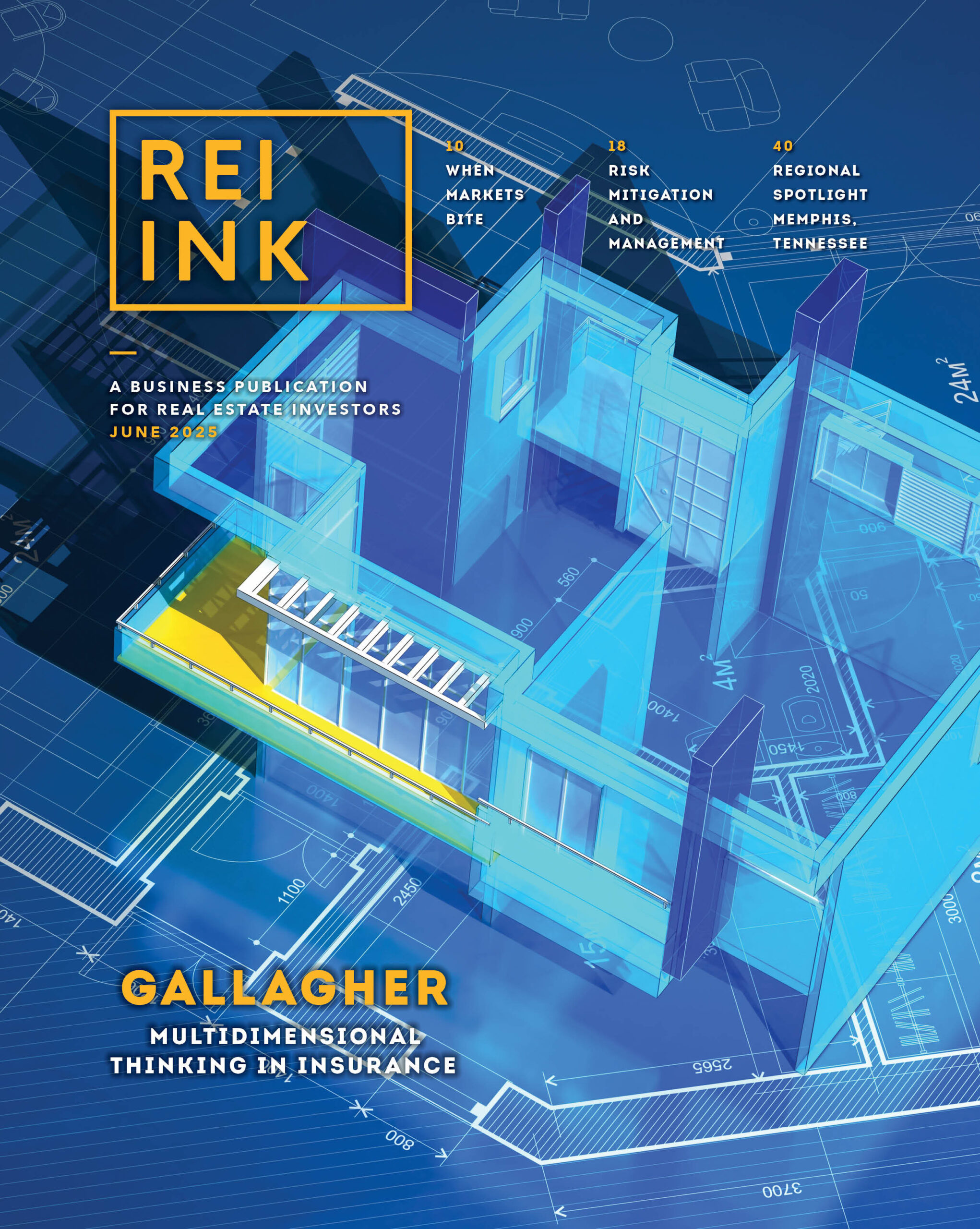Maximizing Yields on Multifamily Residential and Commercial Investments
With the multifamily residential and commercial real estate markets starting off strong in 2022, REI INK asked Rich Osika, Managing Member of REGO by BuildPro Construction Services, to discuss how to maximize yields on investments in these segments.
REGO is a vertically integrated real estate development company—handling every aspect of planning, design, building and delivery in-house.
The general consensus is that 2022 is starting off strong for the multifamily and commercial markets. What are you seeing day-to-day?
REGO is observing the same trends.
Multifamily buildings used to fight for tenants. Now—in a twist on Field of Dreams—if you build it, they will come. For example, REGO does a great deal of work in major metro areas like Houston and Austin, and it’s becoming rarer to see any multifamily residences there with occupancies below 90%. As a result, residential building owners are able to command much more in rent than in previous years. That means more potential profit for investors in these buildings.
On the commercial side, REGO is also seeing heavy demand, including some very creative projects. For instance, the company will be constructing a mixed-use, lakeshore development in Austin on the site of a decommissioned private airport. Buildings for industrial use also represent an important area of growth.
What should excite investors about the current market? Conversely, what should worry them?
The answer to both questions is essentially the same. Unlike with the fix and flip market, this kind of real estate investing is not a short-term game. To create wealth, it must be a long-term play.
For that reason, for every 100 proposals that REGO receives, it will typically move forward on just two. It’s important to rule out or reduce any risks that could lower returns—whether three, eight or even ten years down the road. It’s better to fail a project before it begins than to deliver a weak return after it’s complete.
What about the upside? How can investors maximize their yields?
Taking a holistic approach from the very beginning is extremely helpful. When a project team is staffed by individuals with wide-ranging expertise, there are more opportunities to weigh the tailwinds against the headwinds and make prudent decisions. Pro forma financial statements are very valuable for this purpose.
Having people experienced in site evaluation, proof of concept, architecture, civil engineering, site preparation, systems infrastructure, permitting, sales/leasing and more, all working as one, is eye opening. Each individual notices different opportunities to build on, or obstacles that can’t be overcome.
When they’re evaluating whether a potential multifamily project will be profitable, what factors do developers consider?
To start with, it’s important to understand the businesses in the area, their target demographics, and daily traffic and revenues. For example, if they’re considering a new luxury development, the area must have the population density to support it. If the three high-end grocery stores in a two-mile radius each have an average daily revenue of $200,000 and are always busy, that’s one promising factor (among many) in its favor.
For other projects, the construction of a new highway is a good sign because it will make the area more accessible. REGO, for instance, is developing a large 4,000-unit complex 1,000 feet from a highway exit ramp.
Rapid building of warehouses and distribution centers is another indicator of a potentially profitable location; new employees will want to move close enough to work onsite.
What other aspects of a site should potential investors care about?
Any time there is a piece of land to develop, it’s important to conduct careful due diligence to assess any challenges that will make site acquisition and development more costly.
For example, is the site near a flood plain or on wetlands, and will the building need to be raised? Is there an adequate water supply for an expanding population, or will a new 200-foot commercial water well be required? Does the regional sewer system extend into the area? Are all other utilities available, and how is broadband/mobile access?
What do architects feel they can develop given existing zoning laws? From engineers’ perspectives, what are the opportunities and risks of supporting architects’ initial blueprints?
There are environmental considerations, too. If a gas station was on the site 18 years ago, that is a potential red flag. Conversely, if a school was there, chances are good that the site is clean. If it is on top of a former golf course, investors need be wary of pesticides seeping into the groundwater.
Assuming that owners have identified a good site, how can they maximize their yields?
They need to know what is optimal, region by region, because there will be variation.
Once they have a benchmark in mind, they should calculate the required operating income to make their investment profitable. They should have a sense of how long they will hold onto the property. It it’s a long-term investment, they may be able to build at a higher price, under the assumption that their ongoing expenses (such as maintenance) will therefore be lower.
It’s important, too, to understand the behavioral patterns and needs of tenants in different regions. Honing in on the residential side: An owner might be inclined to build a 200,000 square foot building with 230 micro units for maximum profitability. This might work in some parts of Manhattan, but it is unlikely to work in the suburbs as people clamor for more space.
Besides this additional space, REGO sees a general preference for secured residences that feel more like communities—with breakfasts, lunches, movie nights, etc. Tenants will generally stay longer and readily accept yearly rent increases if these buildings truly feel like home.
Do you have any concluding advice?
With this kind of holistic planning, investing can be much more turnkey. Investors should look under every corner before making a commitment. Having transparent access to the upsides and downsides of every potential development is the key to long-term success.


















![ServiceLin Def SFR REI INK X[]](https://i0.wp.com/rei-ink.com/wp-content/uploads/2024/04/ServiceLin_Def_SFR_REI-INK_300x9083.jpg?fit=300%2C90&ssl=1)

